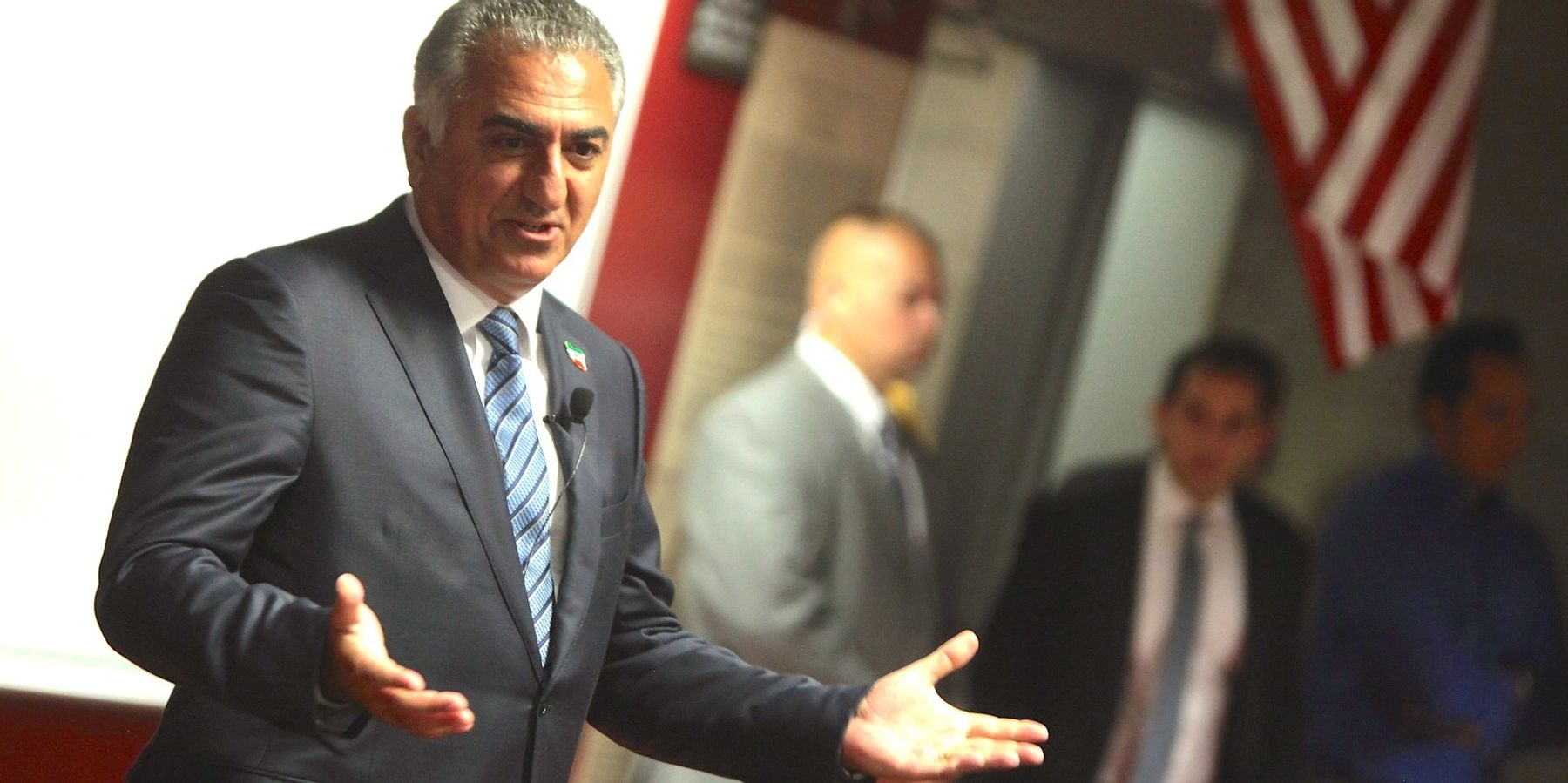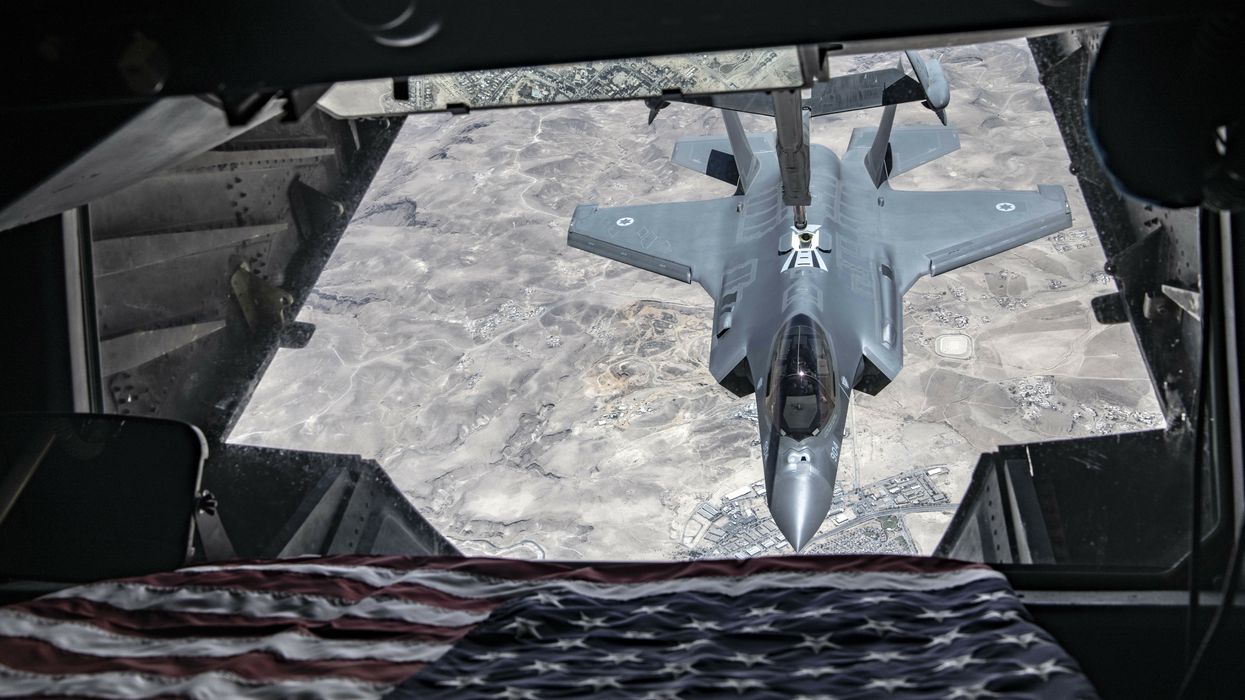The Middle East is a region where history rarely repeats itself exactly, but often rhymes in ways that are both tragic and absurd.
Nowhere is this more apparent than in the current Israeli campaign against Iran. A campaign that, beneath its stated aims of dismantling Iran's nuclear and defense capabilities, harbors a deeper, more outlandish ambition: the hope that toppling the regime could install a friendly government under Reza Pahlavi, the exiled son of Iran's last Shah. Perhaps even paving the way for a monarchical restoration.
This is not a policy officially declared in Jerusalem or Washington, but it lingers in the background of Israel’s actions and its overt calls for Iranians to “stand up” to the Islamic Republic. In April 2023, Pahlavi was hosted in Israel by Prime Minister Benjamin Netanyahu and President Isaac Herzog.
During the carefully choreographed visit, he prayed at the Western Wall, while avoiding the Al-Aqsa Mosque on the Temple Mount just above and made no effort to meet with Palestinian leaders. An analysis from the Jerusalem Center for Security and Foreign Affairs described the trip as a message that Israel recognizes Pahlavi as "the main leader of the Iranian opposition."
Figures like Gila Gamliel, a former minister of intelligence in the Israeli government, have openly called for regime change, declaring last year that a "window of opportunity has opened to overthrow the regime."
What might have been dismissed as a diplomatic gambit has, in the context of the current air war, been elevated into a strategic bet that military pressure can create the conditions for a political outcome of Israel's choosing.
The irony is hard to overstate. It was foreign intervention that set the stage for the current enmity. In 1953, a CIA/MI6 coup overthrew Mohammad Mossadegh, Iran’s last democratically elected leader. While the plot was triggered by his nationalization of the British-controlled Anglo-Iranian Oil Company, the United States joined out of Cold War paranoia, fearing the crisis would allow Iran's powerful communist party to seize power and align the country with the Soviet Union.
The coup reinstalled the Shah, whose autocratic rule and dependence on the West bred a potent mix of anti-imperialist sentiment and religious fervor.
The 1979 Islamic Revolution, in its own way, was a delayed reaction to 1953, a radical assertion of national sovereignty over foreign interests. Now, Israel and the U.S. seem to believe that a new foreign-backed intervention could be the solution to a problem the last one helped create.
Since June 12, Israel’s military campaign has gone beyond targeting nuclear facilities. Strikes have hit state institutions and state television headquarters. In its most symbolic attack yet, Israel also struck Evin Prison, the primary site for jailing political opponents.
President Trump on Monday announced that an agreement had been brokered between Iran and Israel to stop the fighting, a ceasefire that as of this writing, was still largely unconfirmed. It came hours after Iran had launched a limited attack on the U.S. base in Qatar,. The missiles were intercepted and no injuries were reported.
Prime Minister Benjamin Netanyahu has openly framed the conflict as a pathway to liberation for Iranians. Operation Rising Lion, the name given to the air assault, is itself a nod to Iran’s pre-revolutionary flag, a symbolic gesture toward the monarchy’s legacy.
“As we achieve our objective,” Netanyahu said in a video address to the Iranian people, “we are also clearing the path for you to achieve your freedom.”
For all the talk of regime change, however, there is little clarity about what, or who, should come next. Publicly, Israeli officials insist the Iranian people will choose their own leaders. Yet their public embrace of Iran's exiled crown prince tells a different story.
Reza Pahlavi has spent decades cultivating an image as a democratic statesman-in-waiting. In interviews, he speaks of a future decided by a popular referendum, backed by detailed proposals like a 100-day transition plan. To Israel's delight, his alignment extends beyond symbolism to the core of Israeli strategic thinking.
During his 2023 visit to Tel Aviv, he articulated the very logic driving Israel’s current attacks against Iran, dismissing nuclear negotiations as a “waste of time” and insisting that the “quickest way to eliminate all threats” was to invest in an alternative to the regime itself.
Moreover, he envisions a future rooted in what he calls the “Cyrus Accords,” a revival of the ‘ancient friendship’ between the Persian and Jewish peoples, a vision reinforced by powerful personal gestures, such as his daughter’s recent marriage to a Jewish-American businessman.
But this vision, compelling as it may be in D.C and Jerusalem, is almost entirely detached from Iranian realities. For many critics, even within the fragmented opposition, this democratic messaging is a calculated strategy to rehabilitate the monarchy’s image and position Pahlavi as the only viable successor.
His high-profile meetings with foreign leaders—most notably in Israel—and his calls for Western support are seen not as statecraft for a future democracy, but as efforts to secure foreign backing for his own return to power.
The Pahlavi name remains tainted for many by memories of SAVAK torture chambers, lavish corruption, and dependence on foreign powers for viability. While dissent against the Islamic Republic is widespread, slogans from the 2022 “Woman, Life, Freedom” protests — sparked by the death of Mahsa Amini in custody over the mandatory hijab — reveal a deep-seated rejection of both autocracies with chants like, “Death to the oppressor, be it the Shah or the Leader.”
The monarchy Israel hints at reviving was not merely overthrown in 1979, it was actively rejected by a powerful coalition of Islamists, leftists, and nationalists united against the Shah’s repression. This legacy of popular rejection severely curbs Reza Pahlavi’s appeal today.
While opinion pieces in Israeli media frame the choice for Iran as one between chaos and a restored monarchy, Pahlavi commands little tangible support inside a country where many see his movement as “opportunistic” and “disconnected from the Iranian people.”
For Israel to imagine a different outcome in Iran is to ignore the region’s bitterest truths. From the sectarian carnage of post-Saddam Iraq to the militia-ruled wastelands that now scar Libya, Yemen, the last two decades have taught the brutal lesson that foreign-imposed regime change does not produce compliant allies, but rather vacuums filled by extremists, proxy wars, and humanitarian catastrophes.
It is this painfully learned lesson that drove the Arab Gulf states pivot to diplomacy with former rivals like Iran.
The Israeli hope that airstrikes and assassinations are “creating the conditions” for the Iranian people to “rise up,” as Netanyahu stated, is not only ahistorical—it is dangerous.
Even among Iran’s opposition, there is deep skepticism about foreign intervention. As exiled activists have told Western media, Iranians want to topple their leaders themselves, they do not want a “made-up state” or a new regime imposed by outsiders.
In addition, the fantasy that a successor regime in Tehran would be inherently friendly to Israel ignores deep-seated suspicion embedded through decades of conflict, propaganda, and animosity now being cemented by overt foreign intervention. Even Reza Pahlavi, if somehow installed, would likely face immense pressure to distance himself from any perception of being ‘Israel’s man in Iran.’
Israel’s campaign may weaken the Islamic Republic, but it cannot conjure a new, friendly Iran from the ashes, least of all by championing a successor from a fallen dynasty that Iranians have long since rejected.
In the end, the future of Iran should be decided not in Jerusalem or Washington, but by Iranians themselves — on their own terms, in their own time.
- How a shadowy, hawkish new group tied to Iranian monarchists is gaining influence in Congress ›
- Would-be monarch of Iran to brief umbrella org for US Jewish groups ›
- Netanyahu returns to DC, but is it in triumph or with more to ask? | Responsible Statecraft ›
















